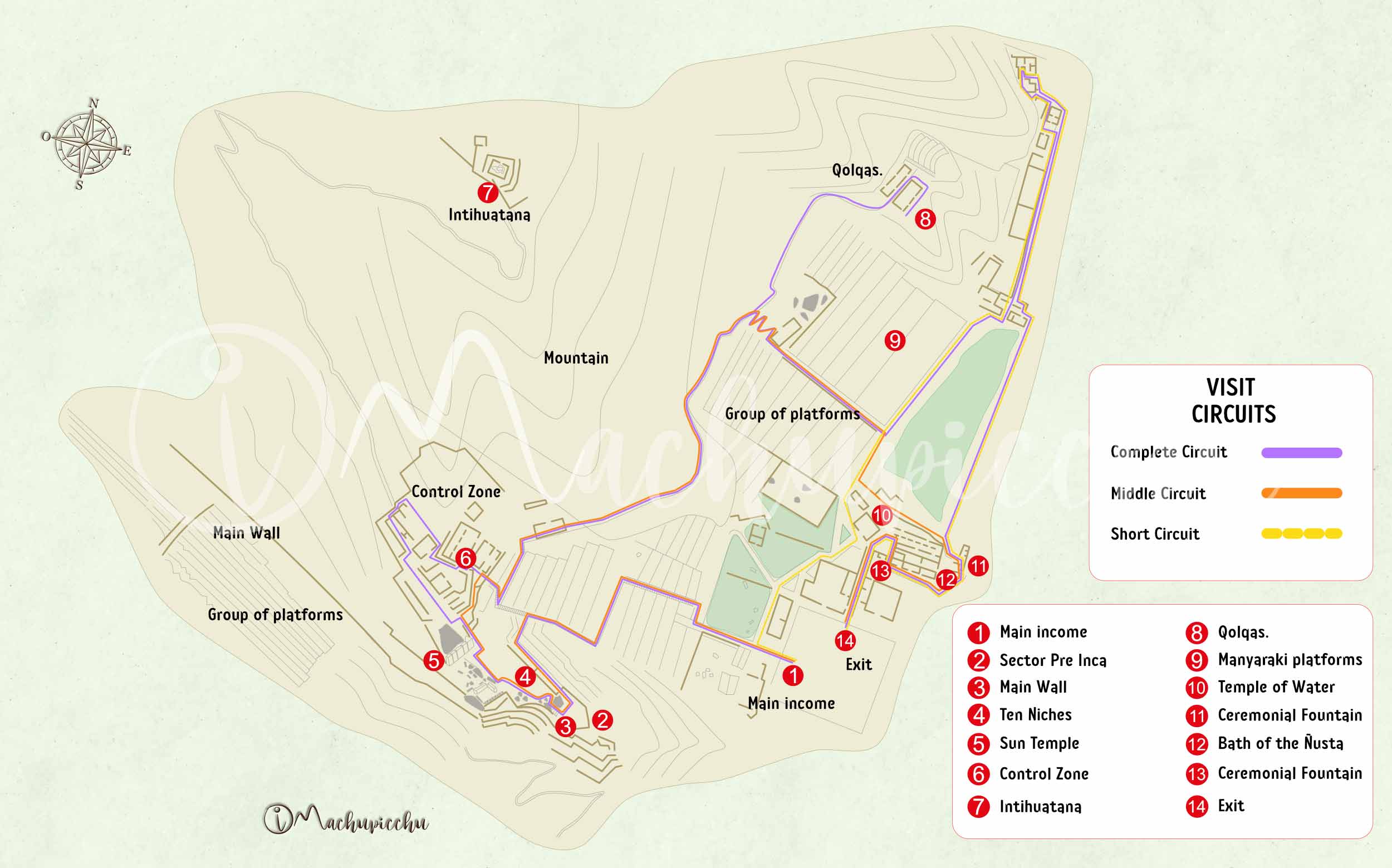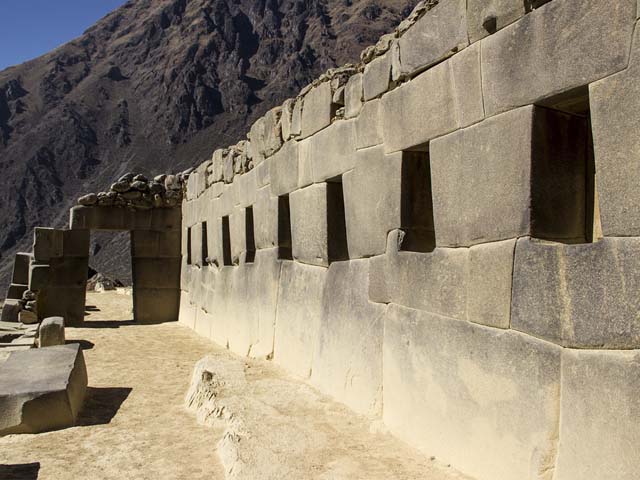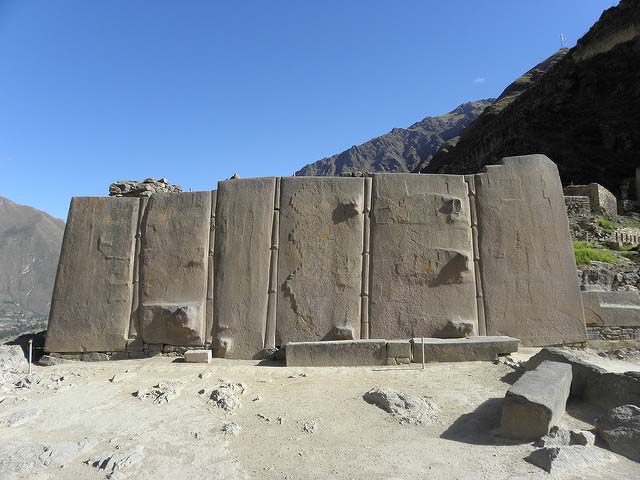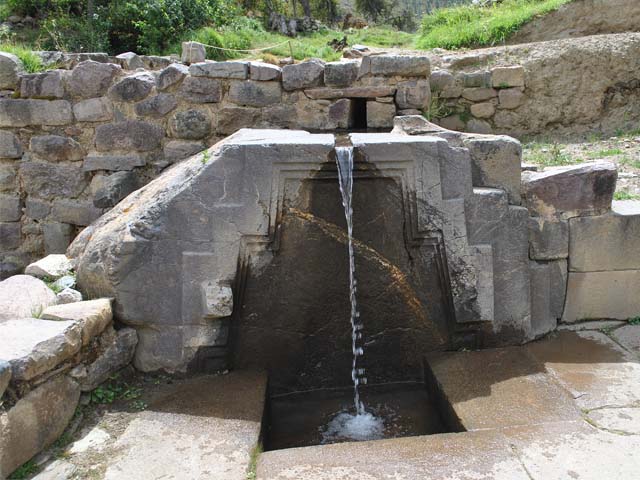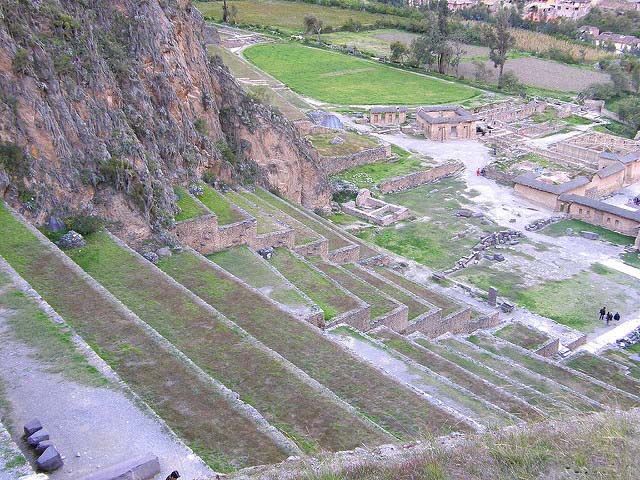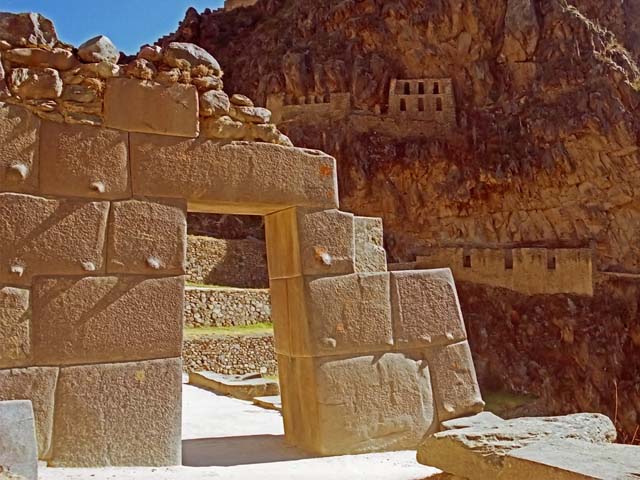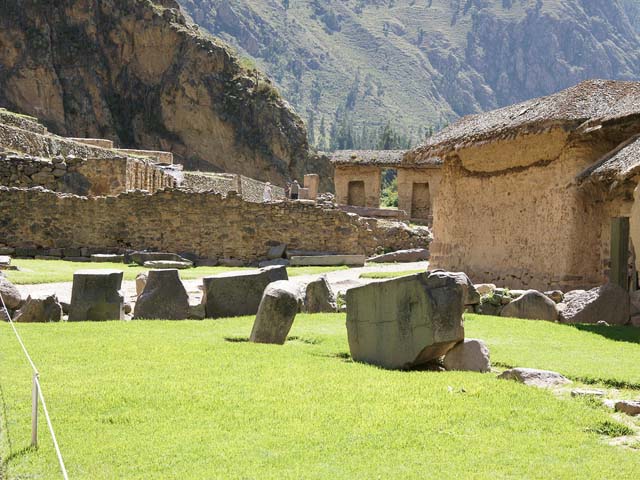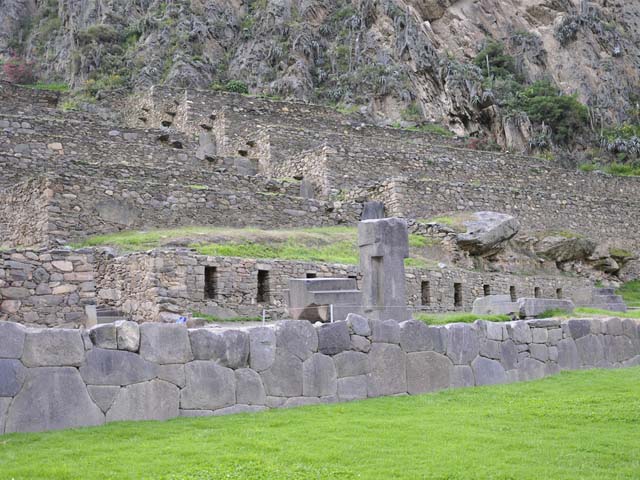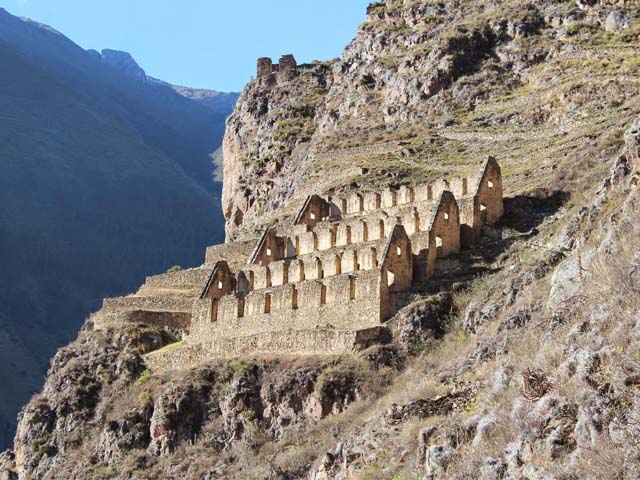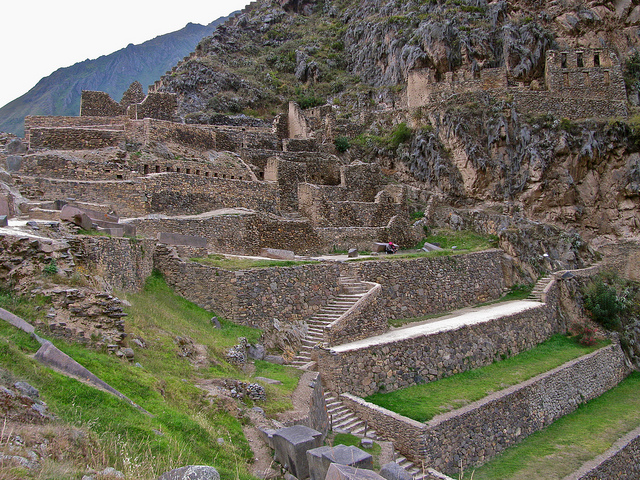Travel guide: Ollantaytambo in the Sacred Valley
Ollantaytambo is one of the most important towns of the Sacred Valley of the Incas in Cusco. It is the only place that preserves its old Inca urban design. Because it is a must before reaching Machu Picchu is very visited. However, ‘Ollanta’ has its own charms. The main one of all are its Inca archaeological remains.
- Ollantaytambo: location, history and map
- What to see at the Ollantaytambo archaeological site?
- How much does it cost to visit Ollantaytambo?
- More information about Ollantaytambo
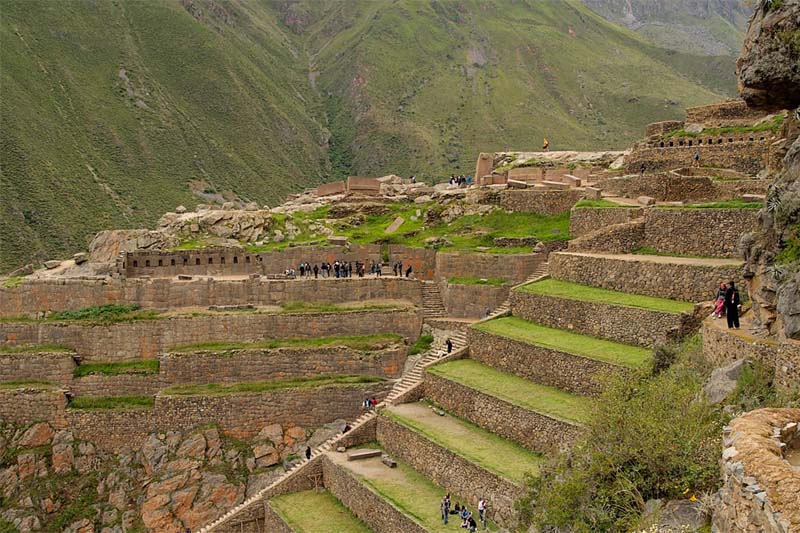
Archaeological Center of Ollantaytambo
1) Ollantaytambo: location, history and map
The town of Ollantaytambo in the Sacred Valley
Ollantaytambo is the only Inca town that is still inhabited. Its stone streets preserve the Inca architecture combined with temples and colonial squares.
It is presumed that it was the Inca Pachacutec (1438-1471) who ordered the construction of Ollantaytambo. Today, this picturesque town is a must for tourists visiting Machu Picchu.
Ollantaytambo is known as the ‘Living Inca City’. Its inhabitants maintain some of the traditions inherited by their Inca ancestors. Its main tourist attraction is the archaeological site (also called fortress) located next to the town.
Currently the town is conditioned to receive tourism. Around the Main Square of Ollantaytambo and in the town there are restaurants, hotels, bars, cafes and other services that invite the visitor.
Where is Ollantaytambo?
Ollantaytambo is at the opposite end of the town of Pisac (80 kilometers from the city of Cusco). It is reached by the Chinchero – Urubamba road or by train (km 68). The town is 2,700 meters above sea level (msnm) and houses some of the most amazing Inca buildings in Peru.
Did you know that the space of the archaeological complex of Ollantaytambo is co-founded with the town since many Inca channels are still in use. It is that the urban organization of the town maintains the same Inca planning. It could be said that Ollantaytambo is the last Inca town in Peru. To walk through its streets is to be transported to the Inca era.
What does Ollantaytambo mean?
The word Ollantaytambo derives from the Quechua word ‘Ulla-nta-wi’ which means “place to see down”. According to the Quechua culture, the name comes from ‘Ollanta’, the name of an Inca captain protagonist of the Quechua drama ‘Ollantay’.
The Spanish derivation of the Quechua word ‘Tambo’ means “City that provides accommodation, food or comfort for travelers”.
History of Ollantaytambo?
- Ollantaytambo was home to various ethnic groups and human groups, which, in the 15th century, were conquered and annexed to the Inca empire by Emperor Pachacutec.
- Previously there were simple clay constructions there. However, with the arrival of the Spanish, Pachacutec ordered the construction of various temples and stone enclosures of great importance such as the Temple of the Sun, the Enclosure of the 10 Hornacinas, the Baños de la Ñusta and more.
- For many years Ollantaytambo was a site of great importance both as a citadel and as a religious site. However, in the 16th century, the Spanish arrived in the city of Cusco, looting the temples and buildings of the city. The Inca rebels fled the city, facing the Spanish at Ollantaytambo in 1537.
- As a result of the clashes between the Inca army of Manco Inca and the Spanish led by Hernando Pizarro, many buildings were destroyed.
- The battles between the Incas and the Spanish there had terrible consequences for the current archaeological site, which was severely damaged in many of its structures. Finally, the Spanish besieged the site, but Manco Inca and his army fled into the jungle, settling in the city of Vilcabamba.
- Ollantaytambo became controlled by the Spanish. Their temples were looted. Some structures were destroyed to build temples and colonial mansions in their place. However, the town of Ollantaytambo maintained its Inca urban structure. Today it is the only town in Peru with these characteristics, which makes it a special place.
- Ollantaytambo is today one of the main tourist attractions of Cusco and Peru.
Archaeological complex of Ollantaytambo
The archaeological complex of Ollantaytambo was a military, religious and agricultural center. This fabulous architectural setting is interesting because of the size, originality and detail of its structures.
During the Spanish invasion in the 16th century it functioned as a fortress for the army of Manco Inca who faced the army of Hernando Pizarro.
As a result, many buildings were destroyed. However, today you can still see imposing buildings such as the Temple of the Sun, the 10 Hornacinas Enclosure, the Ñusta Baths and more.
Ollantaytambo travel map
2) What to see at the Ollantaytambo archaeological site?
Ollantaytambo has beautiful Inca lithic structures. Because it was the scene of hard battles between rebellious Incas and Spanish in 1537, many of its buildings are damaged or destroyed. Even so, the site still conserves the magic and history of many centuries ago.
The Royal House of the Sun
The Royal House of the Sun is made up of 17 very large superimposed terraces facing the main square of the town.
The strong Choqana
Choqana is a Quechua word meaning “where it is knocked down or thrown”. It is located 2 kilometers from Ollantaytambo. It served as an administrative center, checkpoint and strong.
The Square Mañay Raqay or ‘K’uychipunku’
Its name means in Quechua ‘Plaza of the petitions’. It is located on the right side of the Patakancha stream next to the entrance door of the archaeological site. Its walls have many openings that, it is believed, would be doors.
The temple of the Sun
This impressive monolith formed of 6 pieces is almost completely destroyed. However, it is still one of the most beautiful pieces of Ollantaytambo. The 6 huge rocks that form the western wall are coupled with incredible accuracy.
The Monumental Cover and the Enclosure of the 10 Niches
This construction is located at the end of the upper group of platforms. Its walls are constituted by two stone canvases polished with great precision. This site was damaged during the Spanish conquest. It is one of the most popular in ‘Ollanta’.
The Bath of the Ñusta
It is a beautiful fountain with 3 outlets of water sculpted inside. They are known as liturgical sources and could be found in the main cities of the Inca Empire.
The Platforms
In Ollantaytambo we find groups of parallel platforms. They have parameters inclined towards the hill with rungs that come embedded in their walls. They can be seen at a great distance.
3) How much does it cost to visit Ollantaytambo?
How to buy the tourist ticket to enter Ollantaytambo?
The entrance to Ollantaytambo is included in the Tourist Ticket of Cusco. This entry includes access to this and other tourist attractions such as: Pisac, Sacsayhuaman and Coricancha.
The Tourist Ticket of Cusco can be purchased in the authorized offices of Cusco.
Avenue El Sol 103, Cusco. (Tourist Galleries of. 101).
At the door of the same archaeological sites (Sacsayhuaman, Coricancha, Ollantaytambo).
You can choose to buy the Tourist Ticket ‘complete’ or ‘partial’. So, you can choose a certain group of places you want to visit. Keep in mind that buying the tickets for each site separately represents a greater expense.
Hours of service ‘Ollantaytambo archaeological site’: from 7 am to 6 pm (every day of the week).
- Note: Try to arrive early in the morning. This way you will avoid the tourist groups that start arriving at 11 a.m.
How to visit Ollantaytambo on a tour?
The Inca citadel of Ollantaytambo is one of the main tourist attractions of the Sacred Valley of the Incas.
To visit it with a tour, it is best to choose the Sacred Valley of the Incas Full Day tour. The tour includes a visit to the archaeological sites of Ollantaytambo, Pisac and Chinchero. Offers: pick up from the hotel, complete tourist transportation, professional tour guide, buffet lunch in Urubamba and return to the visitor’s hotel in Cusco.
The tour has a cost that varies from 50 to 80 dollars depending on the tourism agency you choose.
Budget to visit Ollantaytambo on your own
This is the budget if you are looking to visit the archaeological site of Ollantaytambo on your own:
Price for Peruvians | Price for foreigners | |
|---|---|---|
| Public bus ticket Cusco – Ollantaytambo | 12 PEN | 12 PEN |
| Tourist lunch in Ollantaytambo | 50 PEN | 50 PEN |
| Entrance to Ollantaytambo* | 40 PEN | 70 PEN |
| Professional tour guide in Ollantaytambo | 30 PEN | 30 PEN |
| Public bus ticket Ollantaytambo – Cusco | 12 PEN | 12 PEN |
| Total price | 144 PEN | 174 PEN |
* Cusco Tourist Ticket also includes entry to archaeological sites of Pisac, Chinchero and Moray.
4) More information about Ollantaytambo
Interesting facts
- In the Ollantaytambo compound, the rebel Incas faced the Spanish conquerors in 1537. ‘Ollanta’ served as a fortress and main headquarters of the rebel Inca army led by Manco Inca.
- On the slopes of Cerro Pinkuylluna (in front of the Citadel of Ollantaytambo) the Incas built stores of provisions also known as ‘colcas’.
- Currently, the starting point to the Inca Trail to Machu Picchu is located just 15 kilometers from the archaeological site of Ollantaytambo.
- At the end of June the ‘Ollantay Raymi’, a staging of the drama ‘Ollantay’, takes place in Ollantaytambo.
- According to an investigation, Ollantaytambo is geographically aligned with other important archaeological sites of the world such as Machu Picchu, Easter Island (Chile), the Pyramids of Giza (Egypt) and others.
Ollantaytambo Photo Gallery
Frequently Asked Questions about Ollantaytambo
1) Who built Ollantaytambo?
The chronicles indicate that Ollantaytambo was conquered by the emperor Pachacutec (1418 – 1471 AD) who ordered the construction of its current archaeological site.
2) What is the most famous construction in Ollantaytambo?
The Temple of the Sun is one of the most famous constructions in Ollantaytambo. It is a huge temple made up of six stone blocks weighing up to forty tons. Each of the rocks is carved and fits perfectly with its surroundings.
3) How much does the entrance to Ollantaytambo cost?
The Partial Cusco Tourist Ticket includes admission to the archaeological sites of Ollantaytambo, Pisac, Chinchero and Moray. This ticket costs 70 soles for foreigners and 40 soles for Peruvians.
4) When did the battle of Ollantaytambo take place?
The chronicles indicate that the battle of Ollantaytambo happened in January 1537 when the troops of Manco Inca resisted the assault of the Spaniards led by Hernando Pizarro. As a result, part of the constructions of the current archaeological site were damaged.
5) How much does a tour guide cost in Ollantaytambo?
If you visit on your own, the tour guide service can be hired at the gate of the Ollantaytambo archaeological site. The cost in shared service is approximately 15 soles per tourist.
6) How high is Ollantaytambo?
The town of Ollantaytambo is located at 2,792 meters above sea level.
7) How to get from Cusco to Ollantaytambo by public transport?
On Pavitos street in the historic center of Cusco you can board the public transport minivans that take you to Ollantaytambo (approximately 1 hour 45 minute trip). The cost is 10 soles per person.
8) How to get to the Ollantaytambo train station?
The train station is located in the same town of Ollantaytambo. Public transport minivans will take you to the station gate. From any part of the town you can also walk there.
9) When is Ollantay Raymi?
The Ollantay Raymi is a traditional festival that dates back to the same Inca era. Today more than three hundred actors and actresses participate to stage the Ollantay drama. This staging takes place at the archaeological site of Ollantaytambo every year at the end of June.
10) How much does a tour to Ollantaytambo cost?
The visit to Ollantaytambo is included in the Sacred Valley of the Incas tour whose cost is approximately 60 dollars per tourist (varies depending on the tourist agency you choose). This tour includes full transportation, tickets, tour guide and buffet lunch in Urubamba. It lasts approximately 10 hours (from 8 in the morning to 6 in the afternoon).
By Ticket Machu Picchu – Last updated, August 16, 2024
